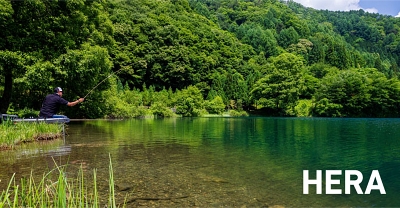
The Art of Hera Fishing.

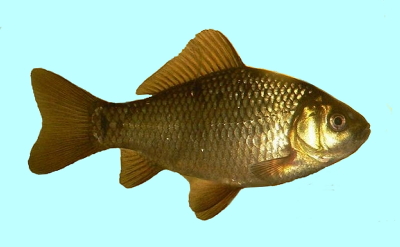
All about Hera rods
How to attach the line to the Hera rod?
How to attach the float to the line?
If rod sections get stuck
How to land a fish?
Take a good care of your rod
Hera fishing is really good fun and it's popularity has grown immensely in the last few years. One of the reasons for this that it Carp the most general fresh-water fish that inhabits in every place: fishing holes, fishing pods, stagnant areas of rivers, streams, ponds, lakes, etc. They are mostly bottom feeders but can also be found feeding at other levels and, on very sunny days, will take food from the surface.

The large carp is more nervous, and during the spring spawning season, they come closer to the shore to lay their eggs, and it is a good opportunity to catch the large monster. Catching bigger fish is always a challenge requiring patience and knowledge especially with the light tackle. Of course it's a lot of fun.
Back to top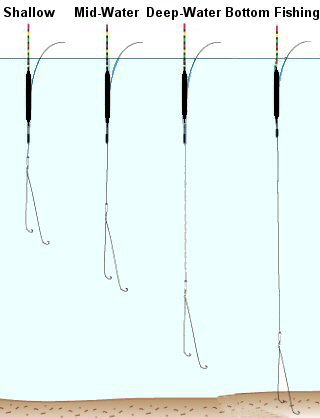
Successful Hera fishing depends on many different factors: season, weather conditions, time of the fishing, temperature of the water, water level, etc. Crucian Carp cannot control their own body temperature, it changes along with the external temperature. They have an air bladder used to control their buoyancy in the water, this why they move around to the most comfortable position for them according to the temperature and air pressure during the day. Crucians are very attuned to changes in the temperature and noise, basically a very wary fish, even the slightest sound in the water will cause them to flee. It is important to be as quiet as possible when setting up for a day of fishing.
There are many different methods of fishing and all of them are a pleasure to use. But one of the best, preferred method for catching any fish, especially crucians is Hera fishing using float, which gives you total control of your tackle, allowing you to use much lighter rigs, provide an extreme level of accuracy.
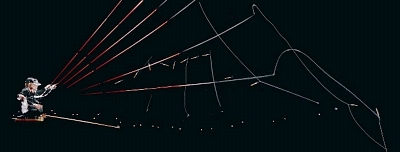
Back to top
What makes Hera fishing a popular competitive method on fresh or salt water?
- Outstanding bait presentation
- Extreme accuracy
- Using lightest of tackle
- The simplicity of using Hera rod
- Challenging, Pleasure, Fan
- Widely used
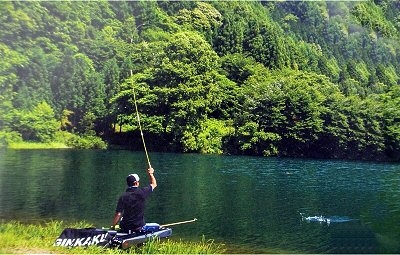
Often you just have to copy nature, use hook bait that matches or imitates native food items living in the water, have the same look, or same moving along the bottom. Like bloodworm often 'shoot' themselves few inches above the bottom before slowly sinking back down. By simply lifting the float up a few inches with the Hera rod, and dropping it back down, the hook bait basically imitates this natural movement.

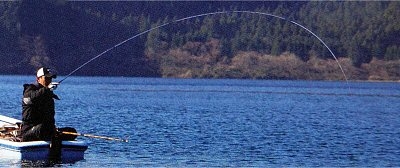
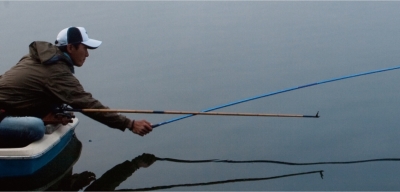
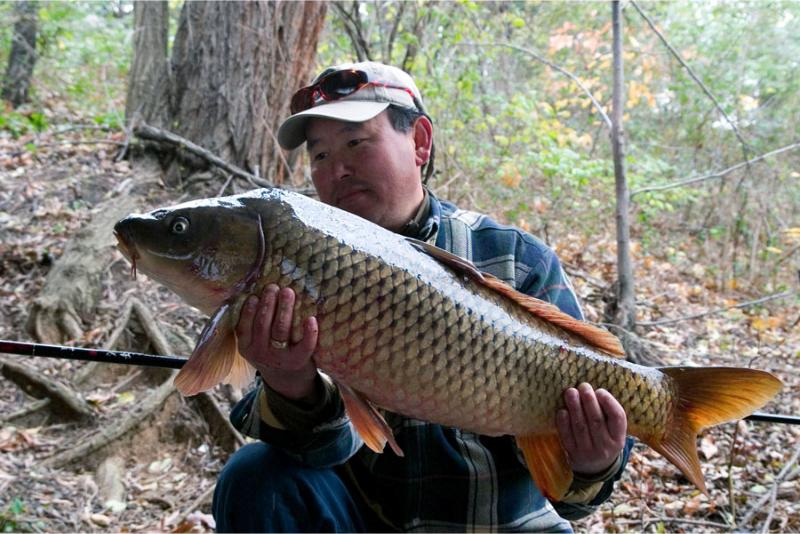
What could be more entertaining than fighting a really big one with the lightest tackle and finally winning the fight? Your Hera rod is bending, the line is gaining, and the fish is flipping and flopping, pulling and running, jumping and swirling. You need good skills, a little luck and a great rod to win that fight, to get as much fun and as many victories as possible.
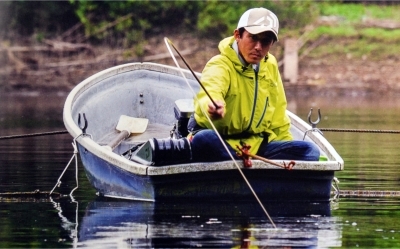
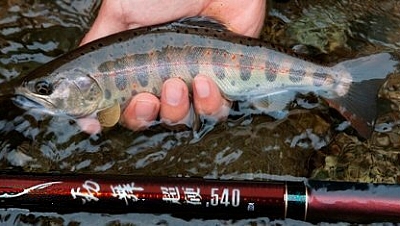
Back to top
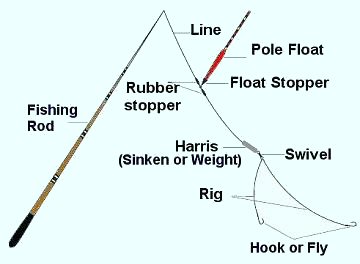
The line is tied to the rod at its tip using the overhand knot on the braid lilian material. Add a line stopper, leaving a 1/8 - 1/4 inch tag to stick out, then girth-hitch a small braid loop on the line between the tip and a stopper. Connect a float to the line attaching it with simple rubber stoppers, put weight between the float and the hook to place the float scale down to the right deep position. That's it, that's all it takes. The next thing to do is bait your hook and cast.
Hera rods are the most powerful type of pole rod series. They are finished with chic Japanese traditional "Hera" rod style, known as intermediate painting. Tightly plied high modulus graphite blanks endure even unthinkable hit of carp. Made out of Graphite Carbon they are designed to bring strength sensitivity and flexibility to improve your comfort level. Much of the credit for this must be given to the tackle manufacturers who continue to produce cheaper, lighter, stronger rods each season.
Hera rods are composed of materials, such as natural bamboo and fiber reinforced resin, they composed of a plurality of connected rod blanks as one long fishing rod in a put-over joint manner or a spigot joint manner. The intermediate rod includes a main layer, a weight layer laminated in a certain range in the axial direction as an outer periphery layer of the main layer, and a coating layer laminated on or above the outer periphery of these main layer and weight layer.
The main layer is a layer composed of a laminated prepreg material. Tape-shaped and sheet-shaped prepreg materials in which carbon fiber is impregnated with an epoxy resin can be given as the laminated prepreg material(s). In the tape-shaped prepreg material, the carbon fiber is oriented in the circumferential direction or in the direction that extends at a certain angle relative to the circumferential direction. In the sheet-shaped prepreg material, carbon fiber is oriented in the axial direction.
The weight layer is composed of a prepreg material with high specific gravity, the material in which metal powder such as tungsten is mixed additionally with glass scrim impregnated with an epoxy resin. This prepreg material with high specific gravity has an extent of 500 to 600 g/mm2, and of thickness of 0.100 to 0.150 mm. This material is laminated on the aforementioned main layer in a prescribed axial location. The coating layer is formed by applying a synthetic resin coating material, such as epoxy resin and urethane resin. The stepped difference between the main layer and the weight layer is canceled by this coating layer.

- High-modulus/high-strain graphite reinforced graphite construction for improved sensitivity.
- The ultimate in high performance.
- Delivers greater strength without sacrificing fishing performance.
- Created from blanks with weights up to 20% lighter than comparative models.
- Strong, powerful blanks can handle the power to handle trophy fish in a light and tough surf rod.
- Lightweight, incredibly strong and easy to cast.
These features produce very light weight rods with great power, accuracy in casting, and extrim sencitivity.
Back to top
How to attach fishing line to the Hera rod
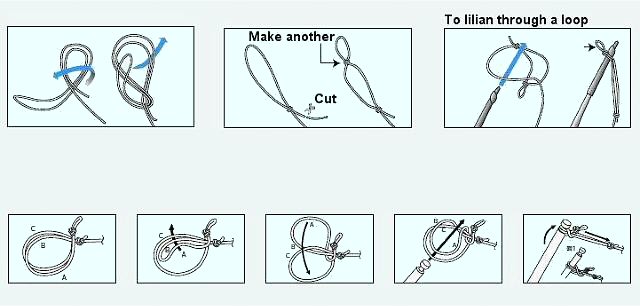

The line is attached directly to the tip of the rod, using the overhand knot on the braid lilian material connected to the end of the tip. A Guiding Line are used for Hera fishing, usually made of Monofilament or Fluorocarbon, size 0.8 - 1.0mm.
How to attach float to the line
Rubber float stopper, "pipe stopper" is used to keep a float with a guiding line. Every rubber stoper has a certain size that fit with the line.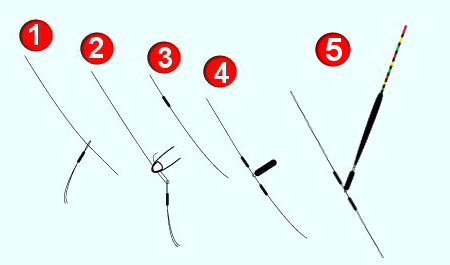
2. While holding the line with your finger, slide the rubber pipe up the line.
3. Slide the pipe up the line.
4. Attach the free moving float cap in between the two pipe stoppers. Make 2cm gap between the two stoppers.
5. Attach the float by sliding tightly the float stem to the free moving float cap. Slowly tighten.
One of the most important and very first thing to do is to workout the water depth and adjust your weights and line to get the float sitting right. The line should be adjusted according to the way the fish are feeding. When Hera fishing bottom style (SOKOZURI) the float must be adjusted so the bait is sitting right on the bottom (the top hook is just touching the bottom).
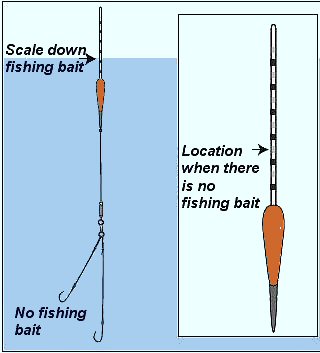
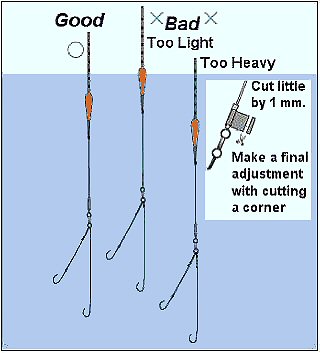
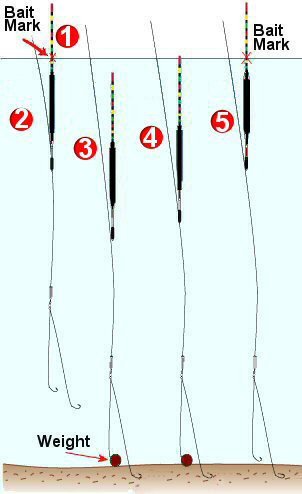

2. Add sufficient weight (depth measure) so that roughly the bottom area of the float's rod sinks below the water. Adjust the bait mark on the float, the point where the water comes up. When the bait mark shows up above the water means there is no more bait on the hook.
3. Attach some weight to the hook and cast into the water. The float should sinks below the water.
4. Removing some amount of the weight repeatedly cast the float into the water and slowly bringing the float higher until the float bristle just sticks out of the water.
5. Once the float is adjusted properly remove the weight (depth measure); it will leave your hook just sitting on the bottom.
Later while fishing if the bait isn't sitting properly on the bottom and you are only getting nibbles and not any good bites on the line it is good idea to adjust your rig by increasing the length of the line below the float by about 1 cm at a time. Keep doing it until your catch rate and strike rate are increased.
Back to top
How to roll sinker around the line


1. Winding tissue paper or cotton thread around fixed part of the weight.
2. Crease with a scissor. The width of the crease is around 1.0mm - 1.5mm.
3. Put guiding fish line in the fold.
4. Fold it closely by your thum to the roll up tightly and to make "Tune Circle". If you do not fold it closely enough it would be flat shape.
5. Roll it on a flat surface. If it look "Flat", roll it on flat surface with pushing of hand hood. It help to shape up.
How to attach swivel to the line and tye on the leader.
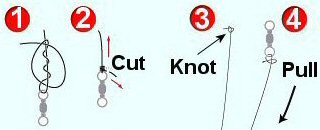
Double back and make 5-6 turns around the line.
Pass the end of the line through the first loop, above the eye, and then through the large loop. Draw the knot into shape.
Slide the coils down tight against the eye.
2. Cut extra line.
How to attach line with Haris using a swivel.


To prevent 'Interwined", use smaller swivel. Tie guiding line with swivel by clind knot or uni knot. Then set haris. It is always better to use hook connected with haris first. You need to change the haris constantly to get a better result.
Back to top
How to Open Hera Rod.
You should open rod with a special care, always keep control of the rod sections. Hera rods can easily take even very heavy load and don't break while fighting the fish, they are very strong and durable but they need to be handled with cared too. Opening these rods must be done very carefully and gently, no sideway pressure should be applied to the rod. Telescopic Hera rods are very simple to open, but there are a couple of points to keep in mind to simplify the process and avoid damaging the rod: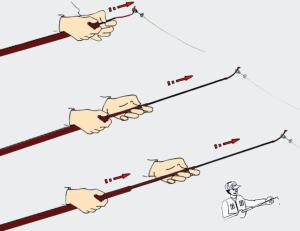
- Remove the plug at the end of the rod and expose the tip of the rod with a lilian string by tilting the rod a little.
- Expose the section with the braided string first and attach the line to the tip.
- Pull the tip and other sections out sliding each part between the fingers. Make sure to open the rod from the tip section to bottom one by one tightly and don't apply any sideway pressure, so the sections can not move when twisted. Extend each section individually and make sure it's snug but not too tight before moving on to the next section. Do not apply too much pressure when pulling sections out as that could cause pieces to get stuck.
Once you're done, shake the rod and see if you can hear any slight click signifying a "crack". If you do that means that one of the sections is not fully extended, identify it and extend it properly.
How to Close Hera Rod.
You should close the rod with a special care, always keep control of the rod sections. Hera rods usually don't break while fighting even very heavy fish but they could break while they are being closed without special care. Closing these rods must be done very carefully and gently, no sideway pressure should be applied to the rod while closing it.
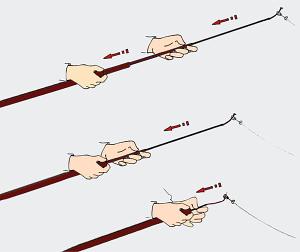
Attention should be paid when drawing in to avoid pulling too forcibly, which may hurt your hand. Draw in the Hera rod from Butt section by turns. If in reverse, the end section may fall into other sections, and maybe cause damage to fishing rod. Bending Hera rod too forcibly or using fishing line when it is in disorder may cause break of fishing rod.
Back to top
If rod sections get stuck:
Occasionally a section may get stuck. The main cause of it is extending the rod too forcibly. Prevention is better than cure: try do not extend the rod too forcibly, try to keep your rod off the ground at all times to avoid dirt getting into the joints. Wipe it clean with a cloth before taking it down so you don't jam dirt into the joint. If you've been using it in saltwater give it a quick rinse with freshwater as soon after use as you can. Its a good idea to put a protectant like WD-40, Tackle Guard or a silicon lube on the joints.
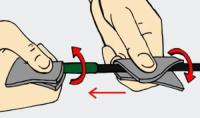

Pour hot water on large side of the joint as close to the joint as you can to rapidly expand it. Then after a few seconds try twisting or pushing the small side of the joint back down. Its best if you can do this under a tap where the water starts off cold then gets progressively warmer over a few seconds as this reduces the risk of stress cracks developing in the joint.
If the hot water technique fails try the next step up. Do the same as above but put ice on the small side of the joint to shrink it. This is easiest if you get some ice from your freezer place it on a cloth or towel and then wrap that around the rod and hold it while you heat the other side with hot water.
Try a penetrating lubricant like WD-40, CRC or Tackle Guard. Leave the joint to soak for an hour or two and then try gently to take the rod down.
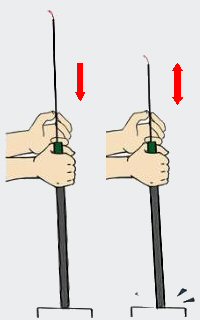
You can try to use a penetrating lubricant like WD-40, CRC or Tackle Guard. Leave the joint to soak for an hour or two and then try gently hold the fixed joints and lightly tap the stuck section against the bottom.
Back to top
How to land a fish.
Needless to say that landing a small fish is very straightforward with Hera rods, just raise it and slide the fish into the landing net range. Catching bigger fish is always a challenge requiring patience and knowledge especially with the light tackle. Of course it's a lot of fun.
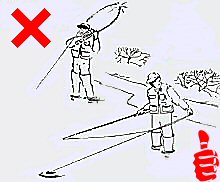
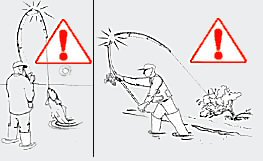
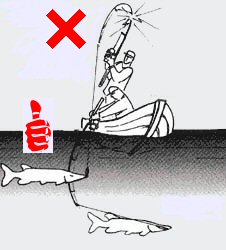
Try to place yourself and rod as lower as you can against the water or ground. Hold the very end of the rod with two hands together. If you don't bring the rod tip up high, most likely you can lose big big ( line breaks) but at least you save the rod.
Take a good care of your rod.
Having a rod break at the moment need it most is probably the most frustrating experience you can have on a fishing trip.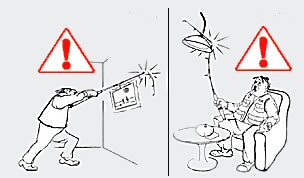

This is one of the most common causes of breakage and is 100% angler-caused.
2. Do not use force to open or close telescopic rod.
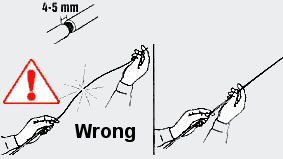
4. Be extra careful when getting your fishing rod out of the car, especially if it is a graphite rod. Too many people break their rod on the car door.
5. Always avoid extreme temperatures.
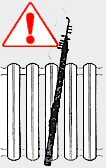
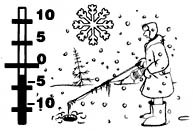
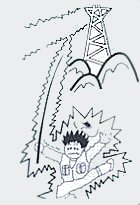
8. If you seal up the damp or sordid fishing rod, the moisture will possibly cause the bubbling or scaling off of lacquer. To prevent this, always rub off the moisture on fishing rod and keep it in a ventilated place. Never store a rod in its tube. Humidity can cause the moisture.
9. Always rub off the moisture, salt and dirt before storage.
10.Never use brush, toothpaste, gasoline, dope and other organic substances to clean the fishing rod; it may create damage to rod surface and even the rod itself. Don't clean the rod by steel brush.


Always remember to take a good care of your rods and they will work for you for a very long time and will bring you large amount of catches and a huge amount of great emotions. More great emotions - longer and healthier is your life.
Back to top

































